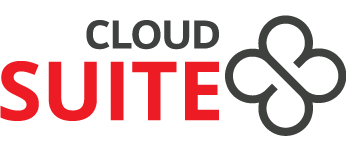A digital strategy is made up of 9 key components. Depending on your business type and industry, some of these will be more relevant to you than others. The important thing is to remain competitive, so it’s a good idea to research other similar businesses in your industry to see how they use digital technologies. Aim to at least keep pace with what your competitors are doing.
The 9 key components of a digital strategy are:
1. Online presence
Your online presence refers to how and where the community and other businesses see your business online. Your online presence includes:
- your business website, mobile website or a campaign mini-site
- social media profiles (LinkedIn, Facebook, Twitter, YouTube, etc.)
- corporate advertising profiles (e.g. on sites such as Yellow Pages Online or TrueLocal)
- links, information, reviews or articles appearing on other businesses’ websites.
2. Digital marketing
Digital marketing is the promotion of your business using online resources and tools. Tools used in digital marketing include websites, micro-sites, mobile apps and social media platforms. These may include online banner ads, search engine marketing, Facebook ads, LinkedIn ads, blogs , guest blogs, newsletters, email marketing, mobile banner ads and ebooks.
3. Selling online
Using online selling in your business allows customers to buy from you whenever they want, even when your shop doors are closed. Selling online typically helps reduce processing times internally, enabling you to focus staff elsewhere in the business.
4. Customer interaction
Customer interaction is about giving customers access to your business through whatever means they prefer – a mobile device, desktop computer, traditional phone call or social media. It should require minimal effort from the customer to find the information, service or product they are looking for.
To support your engagement with customers, you could use a customer relationship management (CRM) system to help you:
- capture and collate information about your clients
- track contacts, call backs and deals
- track the performance of your traditional and digital marketing strategies
- link your customer information with your accounting software.
Learn more about collecting and storing customer information.
5. Online security
Online security is particularly important for small businesses, as it is your virtual assets – the data and information stored on computers and file servers – that are generally the most valuable, and often irreplaceable, assets. Online security may include:
- staff policies for accessing and storing company data, using digital technologies, and dealing with customer information
- cloud-based backup systems (see ‘Cloud computing’ below for more information)
- secure software and payment systems.
6. Supplier interaction
Being active in a digital economy means you have access to global and national markets to establish potential supplier relationships, as well as the capability to undertake supplier interactions more efficiently and effectively.
Your business can profit from sourcing suppliers online – particularly if your suppliers have also embraced digital solutions to provide their products, services and quotes online.
7. Mobile-based solutions
Integrating mobile-based solutions into your business may include strategies such as:
- mobile commerce – giving customers the option to transact via their mobile phone or tablet
- mobile websites – responsive websites that scale down to a mobile phone’s or tablet’s screen size
- mobile applications – purpose-built mobile applications (apps) to help users complete specific tasks. Applications can be either external (aimed at customers), or internal (i.e. aimed at staff, to help them carry out business more efficiently).
8. Efficiencies through technology
Using the right digital technology for the right purpose, be it hardware (tablets, computers, smart phones, servers, etc.) or software (email marketing, CRM systems, business management software), can decrease your business overhead by providing your staff with the capability to undertake their work more efficiently and effectively.
Efficiencies include the ability to process data faster, retrieve information more easily and even downsize your business through the complete automation of suitable tasks. Consider how your business operates and determine which technologies will benefit your business to save time and increase your bottom line.
Decreases in your business overheads can be achieved by moving business processes such as human resources and finance online. This can decrease administrative overheads while increasing employee engagement and improving how information is shared. For example, you could introduce digital technology that may lead to cost savings if you automate how to:
- manage time sheets and pay
- plan and resource work
- order office supplies and stationery
- manage rosters and leave
- provide real time performance appraisals of your team.
According to Deloitte’s Connected Small Business 2017 report, small businesses in Australia with advanced digital engagement are 50% more likely to grow revenue and earn 60% more revenue per employee as those with low levels of digital engagement. In 2013, median revenue per employee for small businesses with very low digital engagement was $87,500 while, for small businesses with a high level of digital engagement, revenue per employee was $187,500.
9. Cloud computing
Cloud computing means storing and accessing data and programs over the internet instead of on your computer’s hard drive. The cloud is just a metaphor for the internet. It is one way to increase capacity or add capabilities as you need them without investing in new infrastructure, training new staff, or licensing new software.




